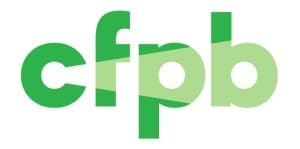Community banks and credit unions will enjoy some regulatory relief after the Consumer Financial Protection Bureau yesterday amended the Home Mortgage Disclosure Act to up the reporting threshold regarding home equity lines of credit.
First enacted in 1975, HMDA requires certain financial institutions to provide mortgage data to the public. When Congress passed the Dodd-Frank Act in 2010 and created the CFPB, the bill directed the CFPB to expand the HMDA data set.
According to a letter previously sent by U.S. House Rep. Michael Capuano, the current HDMA rule would have required credit unions that originate more than 100 HELOCs to report 17 additional data points under Dodd-Frank regulation and an additional 16 to the CFPB.
The final rule, which is set to take effect in January 2018, would have required financial institutions that issue 100 HELOCs or more in each of the last two years to report data, a threshold that many small banks and credit unions considered too low and quite burdensome.
Now with the change, only financial institutions that originate 500 loans through calendar years 2018 and 2019 must report HELOC data.
“The Home Mortgage Disclosure Act is a vital source of information on the health and fairness of the mortgage market,” CFPB Director Richard Cordray said in a statement. “Today’s amendments show that the Consumer Bureau is committed to ensuring that financial institutions are able to comply with the rule, and to promoting transparency across the largest consumer financial market in the world.”
Paul Gentile, president and CEO of the Cooperative Credit Union Association, who advocated on behalf of credit unions this issue, was pleased with the decision.
“This was a small but very positive step forward in the right direction by the CFPB,” he wrote in an email to Banker & Tradesman. “I commend Director Cordray for revisiting this issue and providing some level of relief … Our member credit unions told us from day one of the original proposal that 100 was too low.”
Gentile added that HMDA was really not created for HELOCs because they don’t act as mortgage loans.
“We also don’t see the benefit of credit union data for the CFPB given the volume of HELOCs in the top banks,” he said. “CFPB was created to regulate the bad actors and Too Big To Fail Institutions.”
According to Capuano’s letter, which cited information from the CCUA, HELOC estimates from the first six months of 2016 show that roughly 20 to 25 credit unions in Massachusetts were on pace to issue more than 100 and less than 500 HELOCs.
While they considered the move a step in the right direction, some advocacy groups still are pushing for the CFPB to raise the threshold even higher.
“ICBA is pleased that the bureau has heeded many of our recommendations and provided additional exemptions, clarity and time to help community banks comply with new onerous data reporting requirements,” Camden Fine, president and CEO of the Independent Community Bankers of America, said in a statement. “However, we remain concerned about the staggering number of data requirements under the final rule and the number of community banks that will still be affected by the threshold cap.”
Fine said the ICBA would like “to broaden the exemption for community banks to 1,000 for first lien, closed-end loans and to 2,000 for HELOCs and permanently increase both reporting thresholds.”
“This temporary increase in the threshold will provide time for the bureau to consider whether to initiate another rulemaking to address the appropriate level for the threshold for data collected beginning Jan. 1, 2020,” the CFPB said in a statement.




 |
| 


